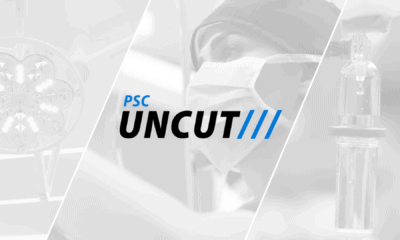Breast augmentation continues to be one of the top cosmetic surgery procedures in the world. The procedure’s reign has much to do with the thousands and thousands of extremely happy patients borne from honed techniques and improved implant technology.
One point of variable concern for patients that remains is breast augmentation’s one downside: a scar. For the vast majority of cases, breast augmentation involves a scar along the inframammary fold, or the crease under the breast. The scars are mostly hidden but in any case, heal extremely well. Even so, many patients are curious about “scar-less” breast augmentation incision locations, notably the transaxillary incision. In this variant, the incision is made in the armpit and the implant placed remotely, leaving the only scar hidden within the skin folds of the armpit.
Many patients jump at the idea of a “scarless” breast augmentation before realizing that it may or may not be ideal for their expected results. Board certified plastic surgeons Dr. Richard Baxter of Seattle and Dr. Daniel Y. Maman of New York City discuss these alternative incision locations and if they’re a wise choice for interested patients.
Understanding the Transaxillary Incision
While an incision along the inframammary fold is the most common placement, placing an implant through a transaxillary incision has had success. “There are certainly people who’ve had a lot of success [putting implants in through the armpit] and it’s natural for patients to want to avoid a scar on the breast, but most plastic surgeons don’t,” shares Dr. Baxter. “For me, I like to see more directly into the space I’m creating. If there’s any bleeding, I want to be able to deal with it right there. It’s more of an indirect approach if you’re doing it the other way.”
Baxter highlights the fact that using the breast fold incision to place an implant means he has much more control over the augmentation, a situation one would expect to result in more refined results. When using an armpit incision, it’s a little more difficult for surgeons to see what’s going on, which could raise the risks of complications and/or an inferior result.
“It’s important to remember why these incisions were first created or tried,” explains Dr. Maman. “The operations originated when we were using saline implants. Those implants came empty, you’d roll it up like a cigarette, put them in through a small, short, remote decision, and tunnel them up to the breast.”
This explanation helps patient to come to a better understanding of why a transaxillary incision used to be a great option, but it’s benefits are dramatically reduced when considering silicone implants. Unlike saline, silicone implants come out of the box pre-filled. For a surgeon to then place a filled implant through the armpit, the incision needs to be large than it would be for an unfilled saline implant. This then creates a larger scar, although it does remain “hidden” in the armpit.
Additionally, the vast majority of modern patients seek out silicone gel implants. If they were requesting saline, then the transaxillary incision may be more highly regarded. The simple fact that the trade-off increases risk is enough for surgeons to push for the more common inframammary fold scar placement. “At least in my practice, 98% of the implants I’ve put in are silicone,” shares Maman. “I don’t think it’s worth the benefit of putting a long axillary incision in to get a silicone implant through a remote plate and risk implant malposition.”
Scars from Incisions and Revision Surgery
Patients jump anytime they see a possibility to limit or completely avoid scarring. Unfortunately, anytime surgery is involved, there will be a scar to tell the tale. Fortunately, the scar borne of the breast crease incision heals extremely well in most cases. If these scars healed poorly, perhaps then more surgeons would look to utilizing the armpit incision more. Because the scar on the breast actually heals very well – and is a non-issue for most patients who speak about them post-operation. “Most scars do really well! Patients are really not unhappy with the way those scars look,” shares Baxter.
The fact is, scars on the breast are minimal and the benefits to surgeons are potentially greater than those provided by a transaxillary incision.
Breast Augmentation Revision – A Guarantee for Most Patients
Beyond scarring, another fact regarding breast augmentation is most patients will have to have a reoperation at some point in their lifetime. This may be because of a complication, a desire for implant removal, replacement, a breast lift, etc. When the times come to revise a breast augmentation, many surgeons will reuse that same scar in order to properly revise the issues patients face.
“It’s also important to keep in mind that there’s a reasonable probability over that patient’s lifetime that they’re going to have a reoperation,” explains Baxter. “Maybe they’re just going to downsize their implants or whatever it is, but it’s not really as feasible through [the transaxillary incision]. If you have an incision that you’ve already made a scar, it’s easy to go back in there.”
Sometimes, situations arise very soon after the initial augmentation that require revision. For these cases, the surgeon performing the revision may have to use the inframammary fold incision to correctly revise the augmentation. If that patient had the original procedure done via the transaxillary incision, then now they have two incision scars instead of just the one.
“I just recently saw a patient who had a transaxillary breast augmentation and she required a revision on that one side,” shares Dr. Maman. “Within 6 months of the initial operation, that surgeon made an inframammary fold crease incision. Now the patient has two incisions!”








Facebook
Twitter
Instagram
YouTube
RSS